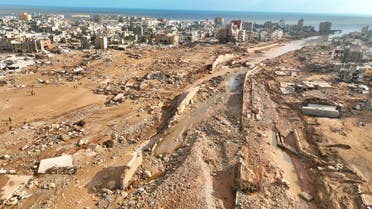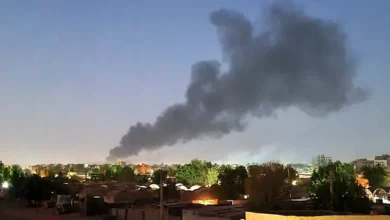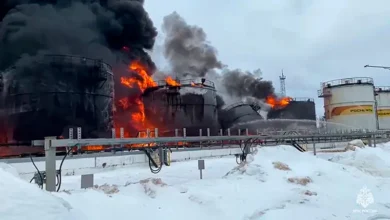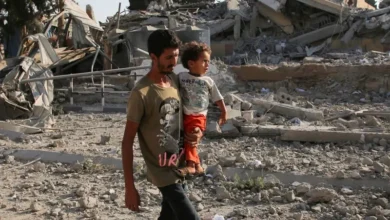Libya’s floods: Everything to know about the disaster that left thousands dead

The death toll from Libya’s devastating floods continued to rise on Thursday as more bodies show up on the shores along the country’s coastline, and at least 9,000 others remain missing.
In Derna alone – the city most affected by the disaster – health authorities have recorded at least 5,100.
At least 30,000 people have been displaced in Derna and several thousands of others were forced to flee their homes in other eastern towns, according to the UN’s International Organization for Migration.
As rescuers race to help survivors, many questions remain about how the disaster unfolded.
How did Storm Daniel come to be?
Satellite images showed the scale of destruction after a severe storm swept away entire buildings and the people inside them on September 8.
But four days earlier, the storm had been brewing over Greece, with reports of strong winds, heavy rains, and flooding in the country as well as in Turkey and Bulgaria.
As the storm moved over the Mediterranean, it transformed into what is known as a “medicane,” or tropical-like cyclone. Daniel grew stronger as it drew energy from the warm Mediterranean waters, where temperatures have risen drastically over the past few years due to climate change.
It then moved over to northeastern Libya where the heavy rainfall caused two river dams to burst, releasing an overwhelming surge of water over the coastal city.
Why was the city of Derna most affected?
According to Libya’s National Center of Meteorology, a record 24-hour rainfall of 414.1 millimeters was recorded in the country’s fourth-largest city, Bayda from Sunday to Monday.
Most of the rainfall happened in just six hours, according to Weather Historian Maximillian Herrera.
Derna, known for its white villas and palm trees, was the hardest hit because the city is located at the end of the Wadi Derna Valley. Its low-lying location and cracked, dry soil – caused by a record-breaking hot summer – made it more susceptible to flooding.
Unable to handle the immense pressure of the water that had gathered against its walls, two dams in the city eventually caved and swept off everything that stood in its way.
According to local media, both dams were built in the 1970s using clay, stones, and rocks and had not been maintained since 2002.

When one of the dams collapsed, the already-deteriorating infrastructure of the other dam succumbed to the powerful force of water coming in from the first. The elevation difference between the first and second dams only added to the water pressure.
According to reports, the water traveled approximately 12 kilometers from the top of the first dam before it reached the sea.
Experts estimate that 30 million cubic meters of water – the equivalent of 12,000 Olympic-sized swimming pools – were released when the dams broke.
With no evacuation plans in place in Derna, the city’s population of 90,000 had no warning for what was to come except the deafening sounds of the dams rupturing.
The city had no internet connection or phone service after the devastation, and first-aid convoys only began arriving after 36 hours.
How does political turmoil play a role?
Prior to the floods, the oil-rich country was already mired in difficulty as armed conflict left Libya divided between rival governments – one in the east and the other in the west.
A lasting effect has been neglected infrastructure. While both governments say they are currently banding together to help those affected, progress has been slow because key bridges, roads and other infrastructure were completely destroyed.










